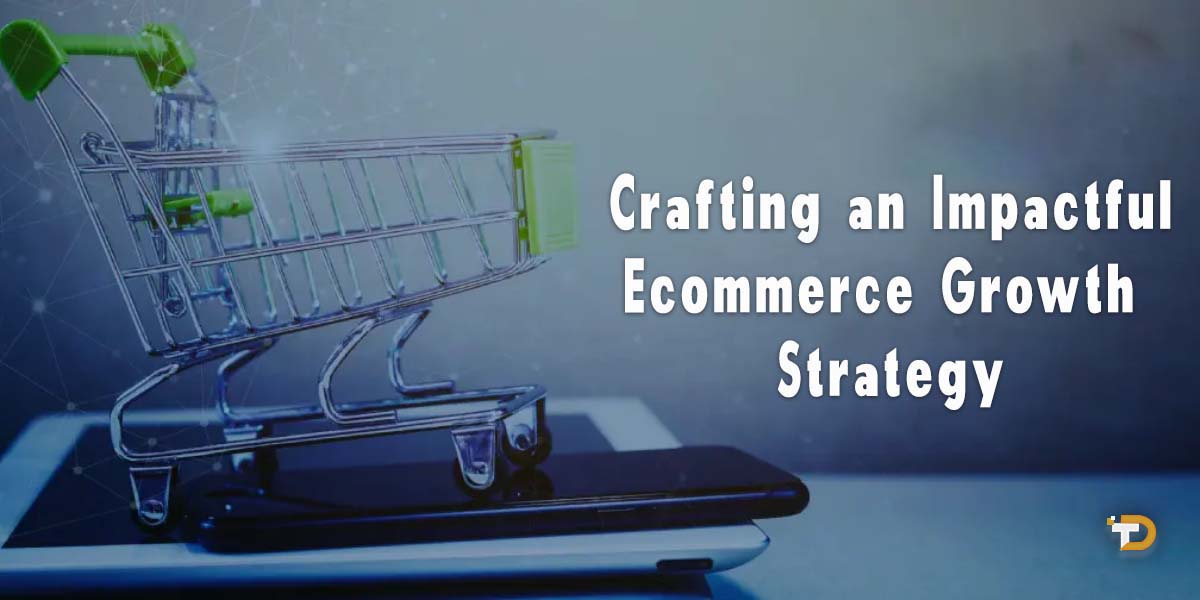Guide to Crafting an Impactful Ecommerce Growth Strategy
As the digital landscape evolves at a rapid pace, merchants seeking to establish or scale their online presence must thoughtfully craft an ecommerce growth strategy. A well-defined strategy serves as a roadmap, guiding businesses to attract new customers, deepen engagement, and maximize long-term success.
Whether launching a new venture or taking an existing operation to the next level, the following guidance aims to empower merchants with the insights and frameworks needed to thrive in today’s digital marketplace. Let’s begin with the critical first step of understanding your customers.
Define Your Target Customer
All strategic decisions stem from a clear understanding of who you seek to serve. Taking the time to develop buyer personas provides invaluable perspective into motivations, pain points, and preferred shopping behaviors.
Begin by outlining core attributes such as demographics, interests and lifestyle. Then delve deeper through primary research methods like surveys and focus groups. Ask open-ended questions to uncover feelings, frustrations and aspirations that inspire product discovery.
For example, an outdoor equipment brand may find their target audience consists of adventure-seeking families who value durable, easy-to-use gear enabling memorable experiences together. Armed with such insights, merchants can create relevant and resonant messaging that cultivates loyal relationships.
Map the Customer Journey
With buyer personas in hand, map out the stages a new or returning customer may progress through – from initial awareness to post-purchase loyalty. This journey mapping exercise surfaces opportunities to streamline interactions and forge stronger emotional connections at each touchpoint.
Typical stages may include:
- Discovery: How customers first learn about your brand through search, social media or word-of-mouth.
- Consideration: Factors influencing their evaluation of options like reviews, recommendations or product comparisons.
- Purchase: Ease and convenience of the shopping and checkout processes.
- Delivery: Fulfillment speed and quality of the unboxing experience.
- Support: Assistance through customer service or self-service resources.
- Retention: Loyalty programs, subscriptions or other reasons to return.
By reviewing each stage holistically, merchants can ensure a simple yet satisfying experience across all channels. Friction points should be smoothed to maintain forward momentum driving customers toward advocacy.
Optimize Marketing Channels

With customer insights in hand, the next step is determining optimal acquisition strategies. Omnichannel merchants may leverage a mix of both online and offline channels, but this section will focus on digital marketing tactics.
Search Engine Optimization
SEO involves optimizing webpages to rank for relevant search terms, bringing organic visitors directly to product listings or educational content. Target long-tail keyword phrases demonstrating purchase intent.
Social Media Marketing
Platforms like Instagram, Facebook and Pinterest allow visual storytelling and community building. Test engaging formats like reels or shoppable posts. Partnering with micro-influencers in your niche can expand reach.
Affiliate Marketing
Recruiting website owners within your industry to promote products in exchange for commissions creates a win-win. Vet partners who align with your brand values.
Email Marketing
Nurture leads and re-engage past customers with personalized, value-driven messaging. Promote new arrivals, sales or support resources. Test frequency and formats.
Paid Advertising
Strategically place ads on search engines or social media to get in front of warm audiences. Monitor performance of headlines, images and landing pages to optimize ROI.
The most effective strategies will vary depending on business goals and budget. Regular testing and measuring key metrics helps refine the mix over time based on quantifiable results.
Enhance the Customer Experience
With new visitors on the way, focus turns to maximizing conversion rates throughout the buying process. Each step must feel intuitive and add perceived value for the customer.
Product Pages
High-quality images, detailed specifications and customer reviews increase confidence in purchases. Considerations like size charts minimize returns.
Shopping Features
Conveniences like search, filters and related product recommendations boost browsing and average order value.
Checkout Ecommerce Growth Strategy
Ensure a fast, simple process with saved profiles, order tracking and payment options. Transparency on shipping costs and timelines sets clear expectations.
Post-Purchase Communication
Nurture new customers with onboarding emails while re-engaging past buyers with timely discounts, notifications or content.
Customer Support
Respond to queries on all channels promptly with empathy and solutions to retain satisfaction. Knowledge base articles resolve common issues independently.
Loyalty Programs
Reward repeat shopping with tiered perks like free shipping, exclusive access or gift with purchase to increase lifetime value.
By anticipating needs, reducing friction and providing ongoing value at each touchpoint, merchants build trust that keeps customers coming back for more.
Optimize Operations & Logistics

Behind the scenes operations directly impact the customer experience and overall efficiency. Strategic alignment between business goals and the supporting infrastructure lays the groundwork for sustainable growth.
Supply Chain Management
Partnering with reliable vendors and leveraging demand forecasting ensures adequate inventory levels and minimizes stockouts or overages.
Warehouse Management
Automating fulfillment workflows with tools that sync inventory across sales channels saves time and prevents errors. Consider outsourcing logistics to a 3PL.
Shipping & Delivery
Offering low-cost, tracked shipping with guaranteed delivery windows builds confidence. Subscription boxes provide a predictable customer experience.
Data & Analytics
Leverage customer, product and sales insights to optimize assortments, pricing and promotions based on quantifiable results.
Technology Stack
Integrate systems like ERP, POS and CRM using APIs to streamline processes end-to-end for a seamless omni-channel experience.
Continuous process improvement supported by the right technology infrastructure lays the groundwork for scaling operations efficiently alongside growing demand. Outsourcing non-core functions to experts allows focus on strategic growth.
Measure Success & Test New Tactics
Meaningful metrics provide the feedback needed to refine strategies over time based on quantifiable results. Beyond top-line revenue and unit sales, also track:
- New vs. Returning Customer Rates
- Average Order Value
- Conversion Rates
- Customer Acquisition Cost
- Lifetime Customer Value
- Return on Ad Spend
- Website Traffic Sources
- Abandonment Rates
Regular A/B testing helps determine the most impactful initiatives. For example, compare on-site search placement, new sorting filters or timely discount promotions to isolate winning variations.
International expansion, new product categories or sales channels also present controlled experiments. Evaluate both hard metrics and soft factors like qualitative customer feedback.
With ongoing measurement and testing, merchants continuously improve while minimizing risks from assumptions. Data-driven decisions optimize resource allocation and fuel sustainable long-term growth.
Read More: The effects of augmented reality (AR) and virtual reality (VR) on e-commerce
Conclusion
Developing a comprehensive ecommerce growth strategy requires understanding customers, optimizing interactions and operations, then measuring success. This framework empowers merchants with a blueprint to attract new audiences, deepen loyalty and scale efficiently based on quantifiable results.
Regular refinement keeps the plan aligned with shifting market conditions. Resources to support strategic initiatives may evolve over time as well. However, maintaining a customer-centric, data-driven approach provides the north star for impactful decision making.
By grounding tactics in well-defined buyer personas and goals, merchants can navigate industry changes while strengthening emotional connections with their community. Consistently delivering value is the surest way to thrive in today’s digital marketplace.





